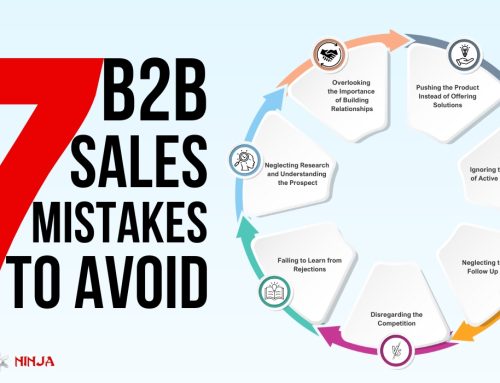Do you have your eye on the numbers all the time? Are meetings churning out uninspiring updates and unmotivated employees? Are your dreams of leading the top sales team slowly fading away? Do you find that your employees are finding it harder to reach their KPIs? As times grow tougher and the industry comes to be more competitive employee engagement is a concern.
Would you like to find out how to eradicate inefficiency?
Let’s start by asking yourself these 5 questions:
1. LEADERSHIP: Are you being the leader they need?
Let us take a step back and bring out the salt as I ask you this – are you leading your team as they NEED to be led? Does your leadership inspire and create the passion and fighting spirit necessary in your team to enable them to push past their own limits?
Does it matter if you don’t?
In a survey by JobStreet.com back in 2016, 23% of employees in Malaysia attributed leadership and management to unhappiness in the workplace.
How has this happened?
It is the mindset of the leader that affects the team’s performance. As a manager and a leader, do you allow yourself and your team to challenge each other? Instead of believing that you are above the team, remember that you are “on the team”. In doing so, you build trust. When there is trust, employees are more likely to contribute their opinions and ideas within the team as well as across divisions. Being able to communicate freely – with mutual respect – would mean that ideas, needs, deadlines and concerns can be addressed and conceptualised early on. By approving of this stimulation, employees are more likely to get the support they need to restore their motivation and their desire to fight to reach their goals and KPIs. Gallup’s State of the Global Workplace Report from 2017 found that the best separator of employees that are “enthusiastic, high performing” and those that are “low performing, miserable” is the statement:
“There is someone at work that encourages my development”.
Be that someone.
2. JOB SCOPE: Are they doing what they do best?
Think of your team as football players – in a football team, players individually contribute towards the team’s goal of winning the game. Each person has his/her strength. However, if you swap responsibilities between the season’s best goalkeeper and the best striker, you might end up with a humiliating loss.
Where did you go wrong?
If you are rushing to fill empty positions, you might wind up with an employee brandishing an uncredited online certification for the required skill set. Why is this a problem? With only basic skills, training time increases and actual output might delay operations and yield results after the end of a quarter.
“But what if the other option is an employee who is asking for double the pay?”
Then ask yourself this – is it worth it to waste 3 months’ worth of resources and projected sales on someone who might not live up to your expectations or do you wait it out and invest in someone who has the knowledge and most importantly – dedication – to bring your company to new heights?
3. CONNECT: Do you know what their favourite colour is?
“I like the colour blue, it reminds me of the sky and it makes me feel calm”.
Knowing trivia as simple as your employee’s favourite colour could help you understand them better. Getting to know them opens up avenues of understanding – what they like, dislike, fear, or are good at. Once you establish a baseline of conversation, it will be easier to broach onto subjects like their mindset at work, their gratification from it. Your employees are more likely to answer surveys when they know that you care. Surveys are not yet outdated – if anything, they are easier to dish out and get responses for with the convenience of technology.
“Gain credibility by focusing on issues you know you have the power to address.”
By understanding where your employees are in terms of job satisfaction, you will be able to suggest solutions, implement changes and work on new initiatives that will allow you to ensure that there are positive changes in your company. From the right motivational quotes to the best colour to paint your office walls, you won’t go wrong if you talk to your team!
4. INCENTIVES: Are they rewarded for a job well done?
If you are reading this and thinking,
“They are already getting paid – isn’t that reward enough?”
Try to remember how hard you worked for a “Gold Star” sticker or “Good work” stamp back in kindergarten. This is a form of an attempt to increase engagement in tasks. Now, how did it make you feel once you got that star/stamp? Because we mould generations by the way they learn from a young age, we have developed unconscious diligence that comes up when given an incentive. Property agents and sales teams have incentives to sell or rent out homes on behalf of owners by being given a percentage of the sales. Marketing teams can also incentivise based on a number of leads generated from their ads and campaigns.
Small companies (start-up or SME) with limited funds need not worry – incentives don’t always have to be money related! “Cool” companies are providing benefits that do not break the bank. It can be something as simple as fast-food restaurants allowing employees free food during their shifts (In-and-Out Burger in the U.S. does this) to encourage employees to play ping-pong, basketball or even just lounge on bean bags in the office’s designated areas (Leo Burnett, Rev Asia, Sales Ninja and the MindValley are great examples right here in Malaysia!). Sales Ninja is known for its quarterly team building activities – bowling, rafting, outdoor challenges. Most activity providers have special rates for companies and groups!
5. TRAINING: Have they been given the right training?
Supporting your employees can come in various forms – connecting with them and providing incentives as mentioned before – as well as through ensuring they receive the best training relevant to their job. In Jobstreet.my’s Employee Job Happiness Index 2017, 3.45 out of 10 reported being unhappy about the lack of training opportunities.
“Training programmes are a waste of time – I will just buddy up the new recruits”.
While the buddy system works at times, the benefits of training almost always outweighs the drawbacks (especially for big teams). “Almost” because choosing the right training course for your team is an essential step towards ensuring the increase in productivity you need. It would be a waste of time forcing your oldest employees to attend an orientation programme meant for new recruits. Best training programme choice examples – onboarding programmes for new employees, sales training for sales teams, cold calling training for telemarketers. Training programmes can ensure that employees are aware of the 5W’s1H’s of the company – who, what, why, when, where and how. One of the most important aspects taken into account when deciding if the employee would want to stay with the company or to leave it is how much they can learn. Once an employee feels stagnant and unable to improve, they will move on. Running employees through different training programmes can refresh their views on the company, on their jobs and allow them to realign their goals with the company’s objectives. In this fast-paced world, there is something to learn from everyone.
All 5 reasons and questions lead to one big, big root cause: engagement. Can you engage your employees? With the tips above, you are well on your way to turning your “underperforming employees” into “star achievers”.






Leave A Comment